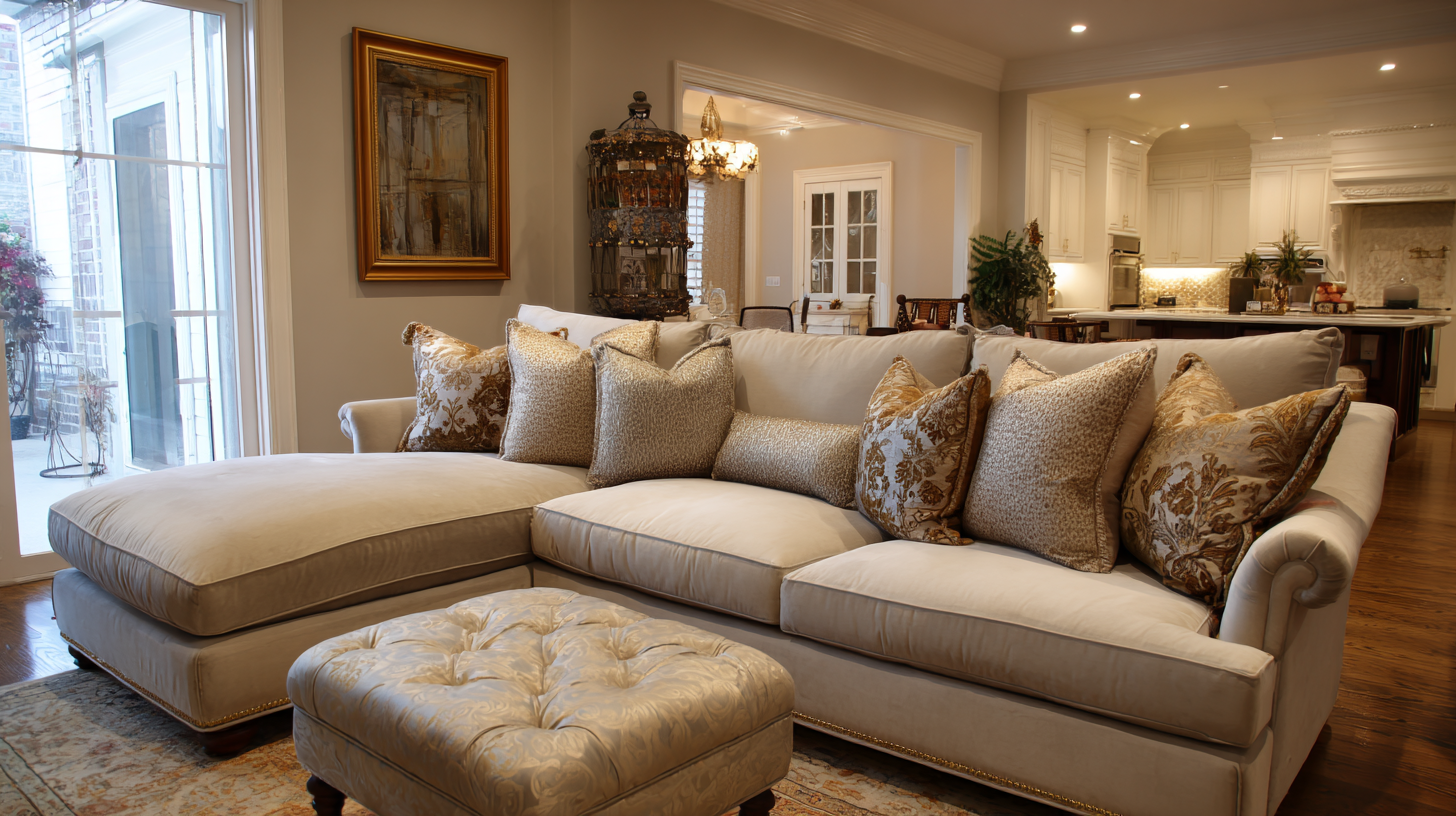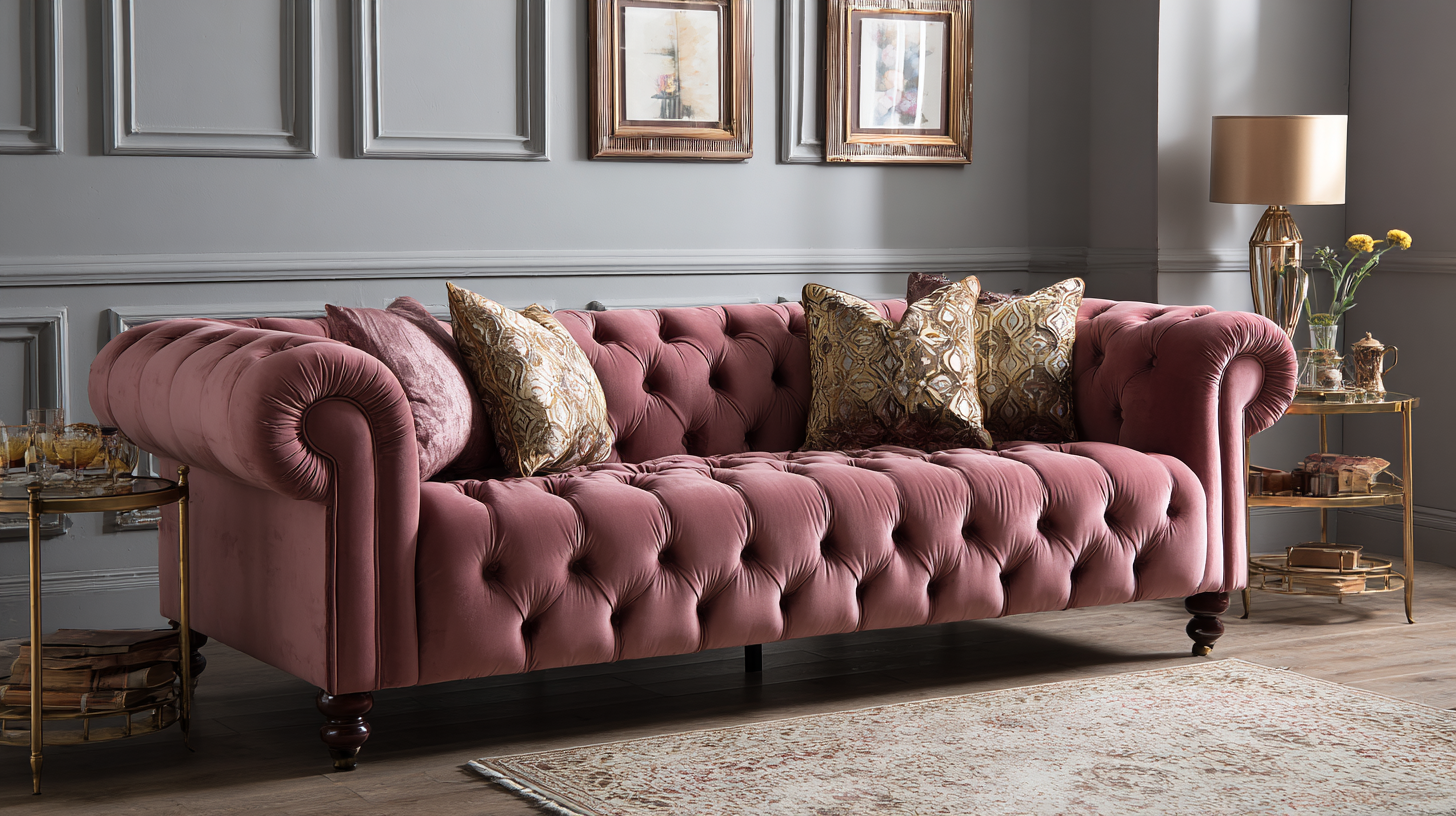Choosing the right upholstered couch is a significant decision for any homeowner, as it can transform the aesthetics and functionality of your living space. According to a recent report by Statista, the upholstered furniture market is expected to reach $37 billion by 2025, reflecting the growing consumer preference for comfort and style in living areas. An upholstered couch not only provides a cozy spot for relaxation and social gatherings, but it also serves as a focal point in your home décor. With numerous styles, fabrics, and layouts available, making the right choice can be overwhelming. That's why understanding key factors such as durability, maintenance, and size is essential to ensure you select an upholstered couch that meets your needs and interior design vision while also contributing to the overall comfort of your home.

When selecting the perfect upholstered couch for your home, several key factors need to be considered to ensure it meets your aesthetic and functional needs. First, think about the size and layout of your living space. Measure the area where the couch will go, accounting for doorways and pathways to avoid any fitting issues. A couch that is too large can overwhelm a small room, while a small couch might look lost in a spacious setting.
Next, consider the fabric and color. Upholstered couches come in various materials, such as cotton, linen, leather, and microfiber, each offering different levels of durability and maintenance needs. Think about your household dynamics: if you have pets or children, you might want a fabric that is easy to clean and resistant to wear. Additionally, choose a color that complements your existing décor and reflects your personal style, keeping in mind that lighter shades may require more frequent cleaning. Finally, don't overlook the importance of comfort; test different styles and foam densities to find the right balance between soft seating and supportive structure.
When selecting the best upholstered couch for your home, it's essential to understand the different upholstery materials available and their unique benefits. Fabric choices range from natural fibers like cotton and linen to synthetic options such as polyester and microfiber. Natural fibers are often favored for their breathability, comfort, and eco-friendliness, making them suitable for families and those concerned about sustainability. On the other hand, synthetic fabrics typically offer versatility and durability, coming in various colors and patterns that can complement any decor style.
Moreover, some innovative materials have arisen in the upholstery market, such as bio-based fabrics derived from agricultural waste, including fruits like mangoes and pineapples. These bio-based options not only provide a unique aesthetic but also contribute to environmental sustainability by utilizing by-products that would otherwise be discarded.
As consumers increasingly seek couches that reflect both style and responsibility, understanding the benefits of various upholstery materials will help in making informed decisions that enhance both the beauty and functionality of home interiors.
When selecting the best upholstered couch for your home, size and space are paramount considerations that can significantly affect both aesthetics and functionality. According to a recent study by the American Home Furnishings Alliance, 30% of homeowners regret their furniture choices mainly due to inadequate sizing for their living areas. An oversized couch can overwhelm smaller spaces, while a too-small piece may fail to create a cohesive look or provide adequate seating.
To ensure a perfect fit, start by measuring your room dimensions and available pathways. The general rule is to allow at least 2-3 feet of walking space around furniture pieces. In open-plan spaces, consider the "floating sofa" design, which can help demarcate areas while maintaining flow. Armed with these measurements, you can better evaluate potential couches, focusing on those that complement not only your lifestyle but also the physical confines of your living area. This tailored approach can enhance both comfort and visual appeal, ultimately elevating your home environment.

When selecting an upholstered couch, the style and aesthetics play a crucial role in harmonizing with your home decor. According to a report by the American Home Furnishings Alliance, nearly 70% of consumers prioritize visual appeal when purchasing furniture. This statistic underscores the importance of choosing a couch that not only supports your comfort needs but also complements your interior style. Whether your home leans towards modern minimalist or cozy farmhouse vibes, the right choice of fabric, color, and design can significantly enhance the overall ambiance.
Color is particularly vital in ensuring your couch integrates seamlessly into your decor scheme. Research from the Color Marketing Group indicates that color preferences can influence mood and perception; thus, opting for hues that resonate with your existing palette can create a cohesive and inviting space. Textures, too, should not be overlooked—velvet, linen, or leather can all impart a different feel to your room. In fact, 65% of consumers report that the texture of their furniture contributes significantly to the tactile comfort and aesthetic appeal of their living spaces. By considering these elements carefully, you can select an upholstered couch that elevates your home's style while reflecting your personal taste.
When selecting an upholstered couch for your home, one of the most crucial factors to consider is the type of cushions used. Comfort and support are directly influenced by cushion material, firmness, and construction. The right cushions should offer adequate support while also providing a plush feel, making your couch a cozy spot for relaxation.
One essential tip is to test the cushions before making a purchase. Sit on the couch for a few minutes to assess how it feels. Ideally, you want a balance between soft cushioning and firm support that aligns with your body. Additionally, consider materials like high-density foam for durability and a latex or down blend for comfort.
Another important aspect is the couch's overall design—make sure the cushions are designed to retain their shape over time. Loose cushions may seem comfortable initially, but they can lead to a lack of support in the long run. Look for foam-encased cushions that offer stability and longevity, ensuring your couch remains a source of comfort for years to come.
